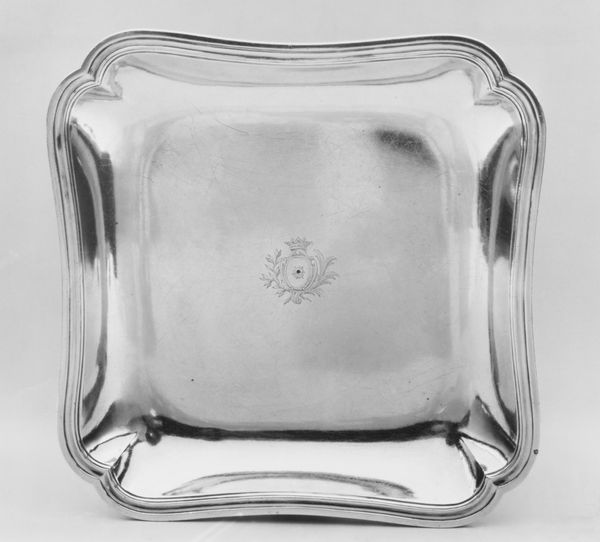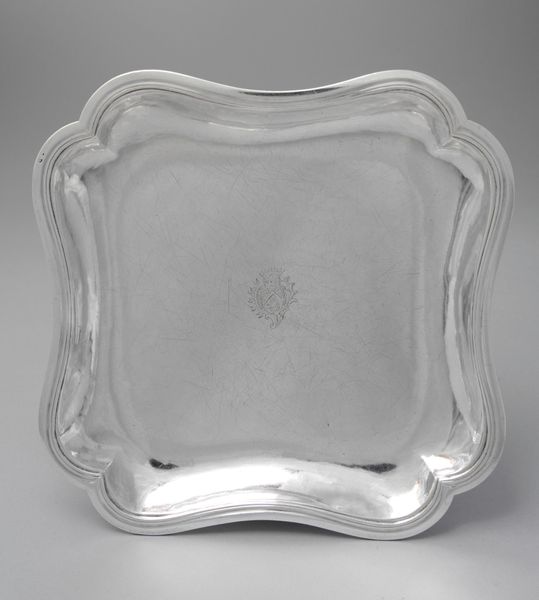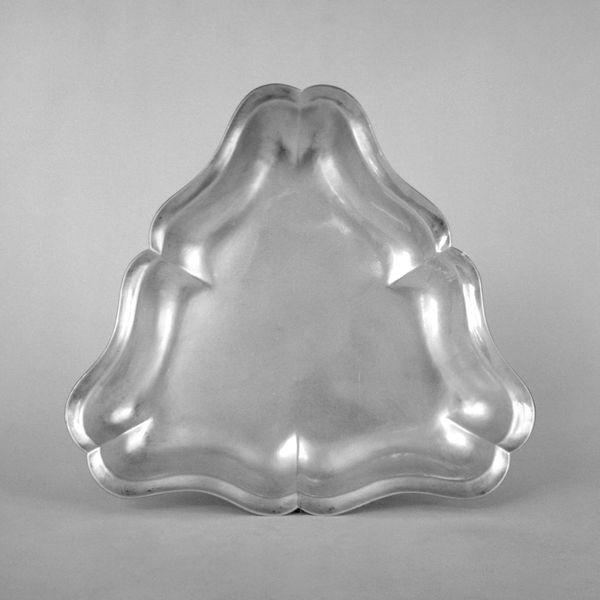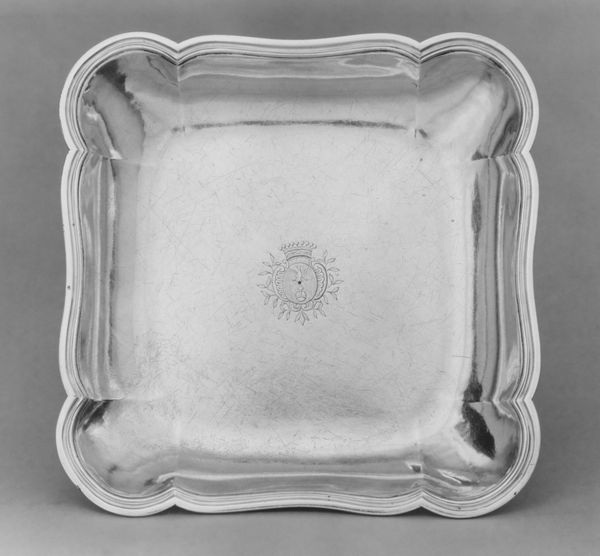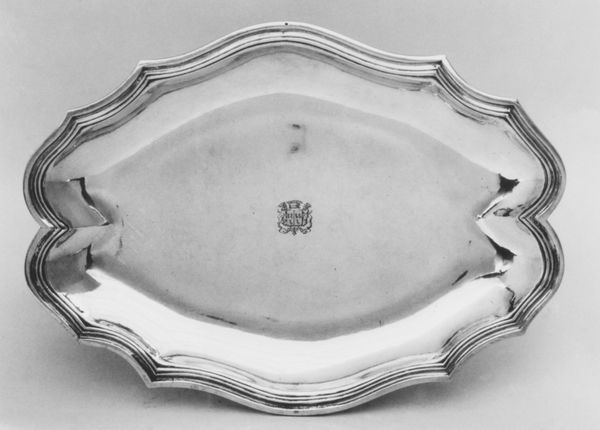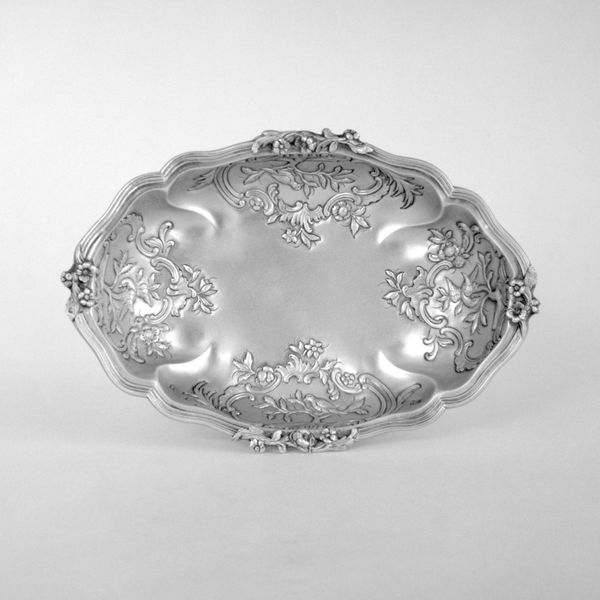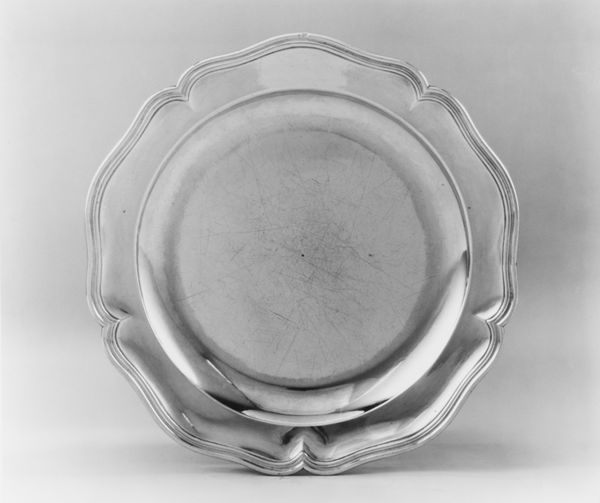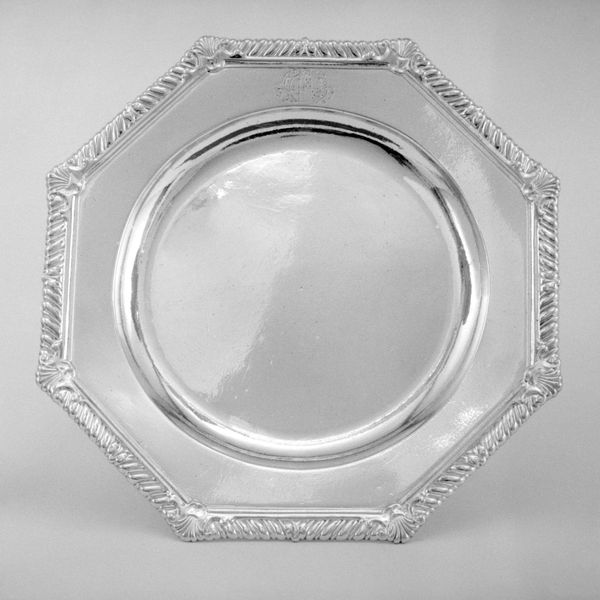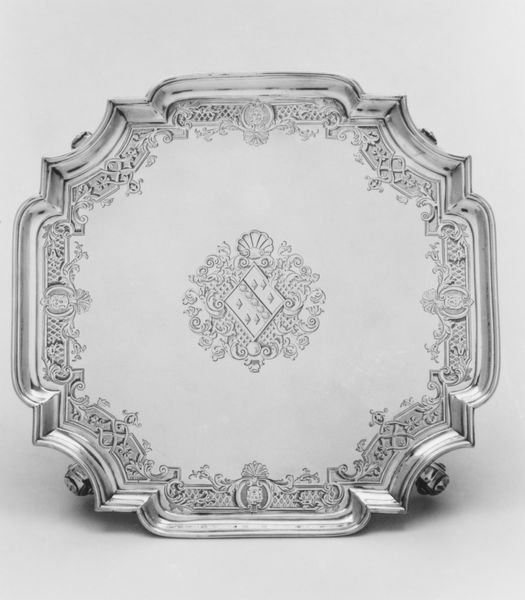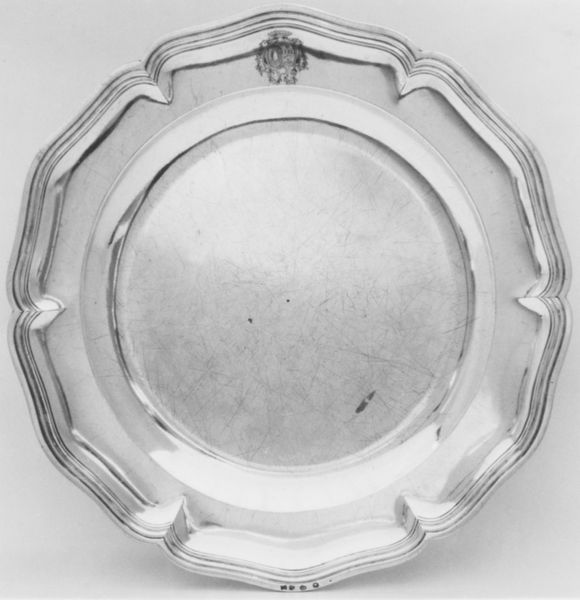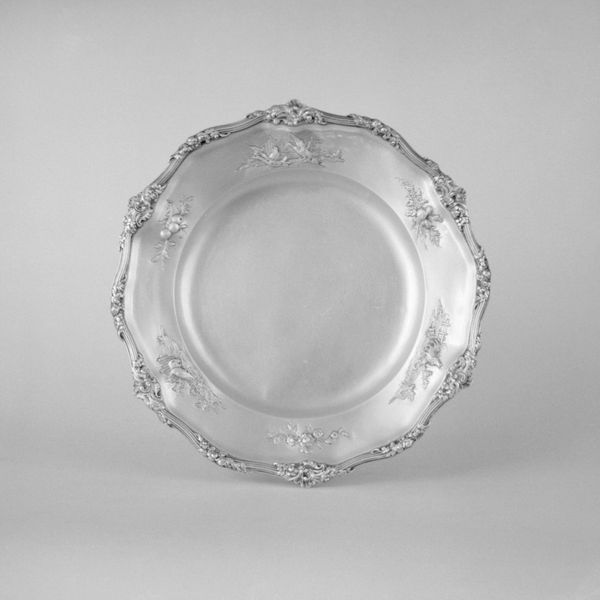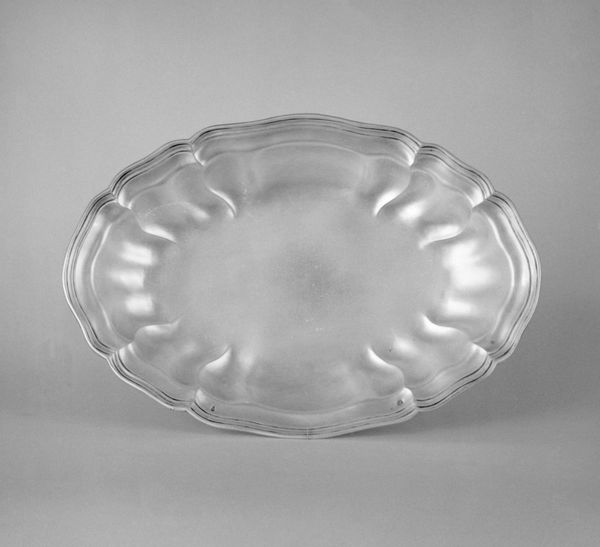
silver, sculpture
#
silver
#
baroque
#
sculpture
#
decorative-art
Dimensions: Width: 10 in. (25.4 cm)
Copyright: Public Domain
Curator: Abraham Drentwett IV crafted this square silver dish around 1757 or 1758. You can currently find it on display at the Metropolitan Museum of Art. Editor: It's so pristine. My first thought is moonlight, captured and held. The simplicity is really striking, even if it's trying to be fancy. Curator: It embodies a Baroque aesthetic, but in a rather restrained manner. What is fascinating is its connection to silver production and its relation to power, as owning luxurious items was often synonymous with a wealthy background. Editor: Like, "Hey, look at me, I can afford a totally impractical, ridiculously shiny plate!" Though there’s something lovely about transforming raw metal into something beautiful and useful, right? Or even useless! Who decided squares could be baroque, anyway? Curator: Good point. Thinking about who owned it offers some answers, actually. Consider the craftsmanship, the mark of status that implies about 18th-century Augsburg society with all of its social and political structures around class and craft. Editor: The little crest throws me back to childhood stories, like kings and queens, squires, and the Holy Grail all huddled together in Camelot eating roast duck from, apparently, very stylish plates. It brings stories to life! Curator: This dish offers a window into how aesthetics, social status, and even political identities become intertwined. It also raises a few points, mostly revolving around patriarchy. The absence of women, for example, in the field of craftsmanship at the time... Editor: I never thought a plate could spark so many thoughts! I was focused on the shine and dreamy light at first! Curator: Well, that’s often how these things grab us—a first impression becomes a critical inquiry. Editor: Yeah, a shiny rabbit hole filled with interesting questions and observations! Thanks!
Comments
No comments
Be the first to comment and join the conversation on the ultimate creative platform.
